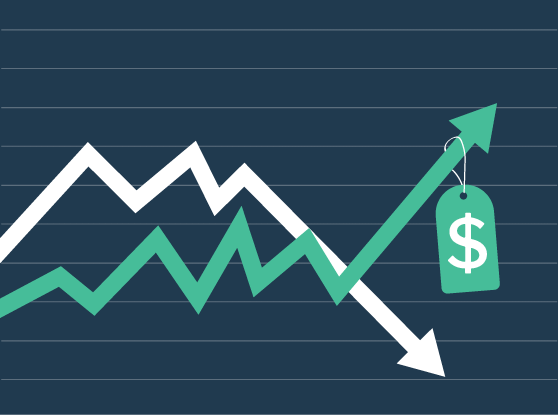Your Pricing Model is Key to Future Success: Lessons from Moviepass and Atlassian

As we emerge from the initial period of the COVID-19 pandemic, this is the time to start preparing your company for what comes next. Customer budgets are still somewhat unpredictable and ensuring a clear line between price and value will be important. Of all the pricing levers you can employ to do this, your pricing model is the most impactful.
Throughout this article, we will be looking at how critical price models can be to your Go-To-Market strategy. We will dive into two powerful examples of how MoviePass’ price model failed their business, while Atlassian’s price model helped them to more than triple their value. As you look to the future, use the learnings from these examples to diagnose and adapt your pricing model.
Insight Portfolio companies can now take advantage of a full guide on how to evaluate and optimize your pricing model. Click here for more details.
Story of a failed price model: How Moviepass led itself into bankruptcy
MoviePass started in 2011 with a novel idea: What if they could turn movies into a subscription service? Customers pay a monthly fee to see up to one movie day. They were making the same bet that many gyms do - that customers wouldn’t use their services enough to drive costs too high. After a few iterations to their business model, they finished 2016 with ~20,000 customers and two different price models: customers had the option to buy 2 movies a month for $15-$20, or see unlimited for $40-$50 per month, depending on the region.
In 2017, MoviePass took a sharp turn – they dropped prices to a flat fee of $10 per month to see unlimited movies. This succeeded in driving customer volume – the number of subscribers exploded from 20,000 to 3 million in just a few weeks. However, they were losing over $40 million per month because they lost money on almost every customer.
There were four key challenges with the Moviepass price model:
- Inability to differentiate ‘landed’ customers – MoviePass had no price discrimination based on different customer segments. It didn’t matter if someone wanted to see 1 movie or 30, if their local movie theaters cost $15 or $5, or if there were any other add-on features that add to the customer experience like concessions or early booking. Every customer paid the same $10 flat fee. And when MoviePass only had one price, they set it at the lowest common denominator. This left a lot of money on the table (see B and C in the below diagram), as customers who would have initially paid more did not. This anchored all customers low, preventing MoviePass from being flexible and raising prices in the future. This stuck them with a starting price far below what they could have captured.

- Inability to ‘expand’ customers - MoviePass had successfully landed millions of customers, but due to its poor price model had no way to expand any of them. Did a customer first buy MoviePass only wanting to see 1 movie a month, but liked it so much that they wanted to expand their usage and see 10 movies a month? It didn’t matter, because MoviePass had no way to charge them for additional usage. When they only had one price to charge customers MoviePass could land customers easily, but there was no way to expand. This inflexibility in offerings prevented MoviePass from ever charging customers more than what they initially paid.
- Inability to align price with costs for customers – MoviePass’ cost was also misaligned to their price model. By paying to cover the cost of movie tickets for its subscribers, avid theatregoers could cost them upwards of $450 per month, yet they would still be charging the same $10 fee.
- Lack of resilience – When all your customers are on one package or price point, they have nowhere to go if their budget changes or the package becomes unsuitable for them. As Moviepass started to make necessary changes to their package to curb costs, customers had no other option but to churn from their service.
In the end, MoviePass was trapped. They were rapidly gaining customers, but not monetizing them effectively and had no way to upsell. Eventually, they began to limit the number of movies customers could see, experimented with Uber-like surge pricing, and even relented to some film blackouts when customers couldn’t use their product. But the damage had been done. MoviePass had backed themselves into a corner by anchoring customers to this low price – any attempt to recover the price model was doomed to fail.
The idea of movie subscription pricing is not doomed to fail; AMC, Cinemark and Regal have successfully learned from MoviePass and have tweaked the price model to better land customers, expand customers, and tie value to price. The same principles that impacted Moviepass’ pricing model apply to any subscription pricing; whether it be consumer, SMB focused or even Enterprise SaaS.
A SaaS success story: Atlassian’s per-user pricing
In the early stages, pricing and cost issues are a reported reason that 18% of startups fail. From our experience, in SaaS businesses as well as consumer, the wrong pricing model presents the biggest risk of pricing failure. As companies scale, price model performance directly impacts key metrics like revenue growth, net revenue retention, CAC/LTV, gross margin and customer satisfaction.
Atlassian has always been a standout company when it comes to effectively operating a land-and-expand model, and their simple value-based pricing model is a key tenet of their success. Atlassian allows customers to be flexible based on the size of their team – a small team in a startup will not be paying anywhere near as much as a large team in an enterprise, and as usage of the product grows throughout the customer’s organization, the price paid increases along with the value that is generated. Their user-based price metric has stayed constant, and tweaks to their price model over time have helped them optimize their revenue streams and growth model.
In July 2017 they made a shift from user tiers (e.g. $10 for 10 users, $75 for 15 users) to a price per user (see here for full details). This meant that they were now making money from every new user that was added to their product, while also reducing the barriers to expansion that exist when customers need to pay significantly more to jump to the next tier. This is a significant factor behind how they have managed to continue revenue growth around 40% year on year even as they scaled past $1bn revenue. Their market cap has jumped from under $10bn to $35bn, with share value achieving >70% CAGR in the 2 ½ years since this change.

Source: Google finance
How to build a strong price model
As you take a look at your own ScaleUp and think “How can I be more like Atlassian, and less like MoviePass” the most important thing to keep in mind is there is no price model that is objectively the best – you need to choose the one that works best for you. No matter what your price model looks like, there are a few goals that every organization should aim for:
- Tie prices directly to the value provided – Customers want to feel that they are paying for value, and that when they pay more they are getting more. Likewise, organizations should not be leaving money on the table and should be able to charge higher prices for additional value they provide. In MoviePass we saw the danger of underpricing their product compared to the value that was being provided, and scaling with it. Price models should accurately tie to the value being created, scale with it, and be applied fairly across segments.
- Create a price model which encourages and monetizes growth – Upsell can be a major driver of growth for your ScaleUp, and you want to do everything you can to enable it. Price structures such as tiers or volume discount curves can provide more value to customers the more that they use, and your organization should be able to capture that growth by charging customers on scalable features such as number of users or usage. MoviePass locked themselves in with no clear upsell path, and organizations thinking about pricing should avoid the same mistake.
- Align incentives between you and your customer – The best practice price models ensure that customers will naturally want to behave in a way that benefits your ScaleUp. MoviePass incentivized customers to watch more movies, but this eventually hurt their bottom-line, whereas Atlassian encouraged more users to sign up which helped theirs. The way you shape your price model will shape your customers’ behavior, and you want to ensure that this is aligned to your corporate strategy.
Where Should Pricing Decision Making Live Within an Organization
If you enjoyed this article, we encourage you to explore other pricing blogs like this one.
Read Now







